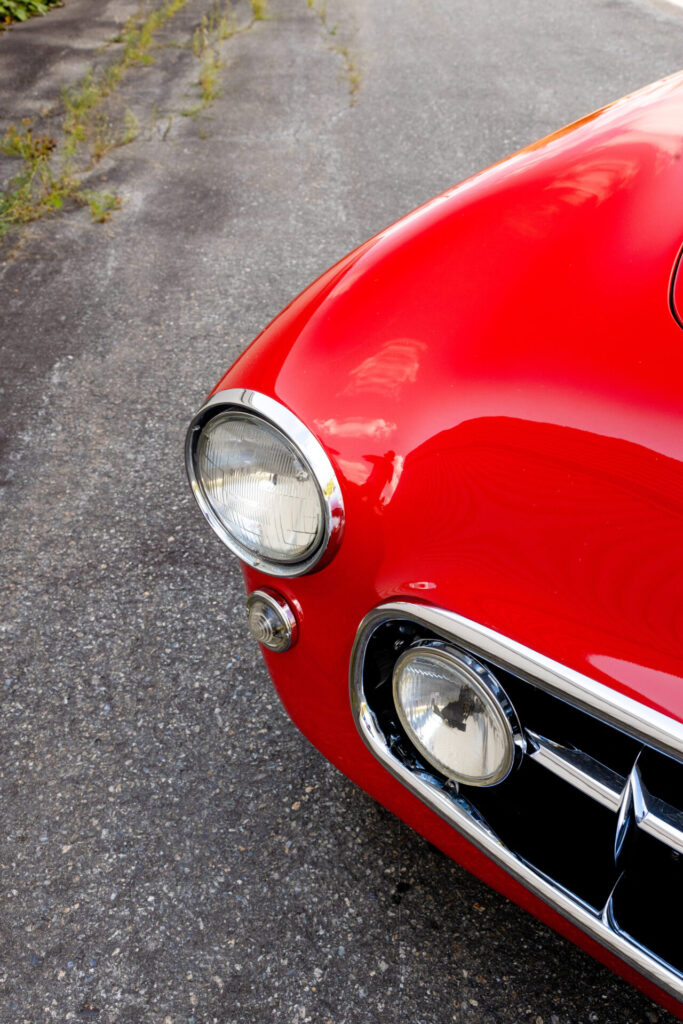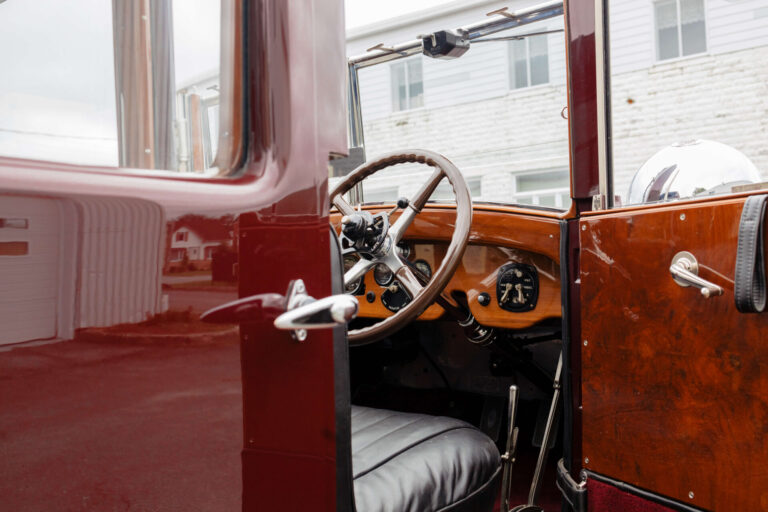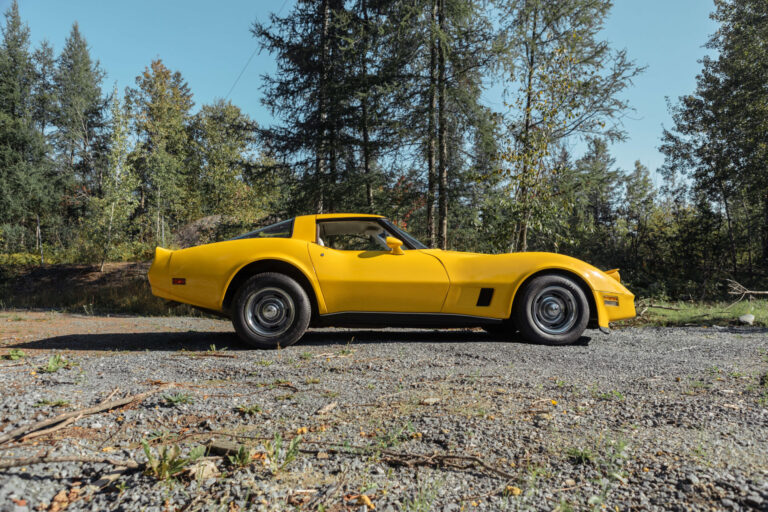The Automotive Dream “One man and his dream had not simply left the world with an engine and four wheels; Henry Ford and his Model T had influenced people's everyday lives - where they lived, how they spent their leisure time, even how they viewed themselves.” - Gary...
Alfa Romeo 1949 6C 2500 SS body by Ghia
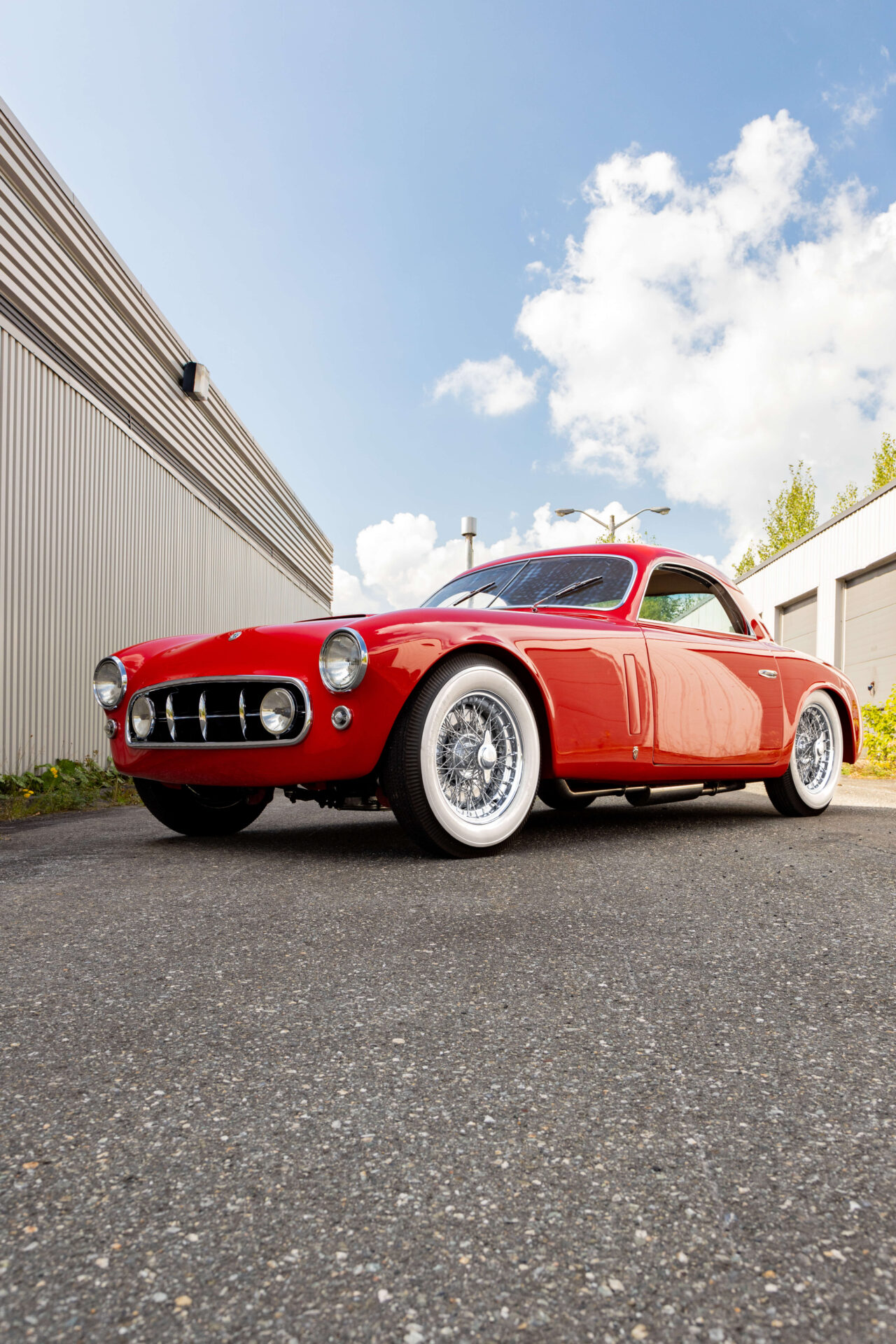
Photo credit - Good Vision prod
Recent posts
Lagonda 16/80 Special Six 1933
English Touring The car we present to you this week is the Lagonda 16/80 Special Six in the Demers Car Collection. Lagonda was a luxury British car brand that Aston Martin eventually absorbed. Through its association with Aston Martin, it is sometimes hard to remember...
An Introduction to Lagonda
Before Aston Martin “The history of Lagonda cars is synonymous with sophistication, opulence, and groundbreaking performance” - An article for Discovery UK Today, we may recognize the name Lagonda from its association with Aston Martin. Before these two brands...
Cadillac Model A 1903
The Standard of the World “No other American car on the market in the first decade of the century was constructed to higher standards than Cadillac.” - Stephen W. Sears in The Automobile in America Some of you may know that Cadillac has long had the slogan “Standard...
The Last Coachbuilt Alfa Romeo
“So everyone wanted the company to survive, but that depended on being able to turn out cars while the factory and the machinery on which mass-production depended were put back into working order.” – David Owen in Great Marques: Alfa Romeo
This week on the blog, we dive into the Alfa Romeo 6C 2500 in the Demers Car Collection. This is the last model Alfa Romeo produced using traditional techniques and the first car the firm produced after World War II. Plus, the 1949 SS model in The Collection is extra special due to its coach: Carrozzeria Ghia made the body of this car. Keep reading to learn more about the 6C 2500 model and this particular car.
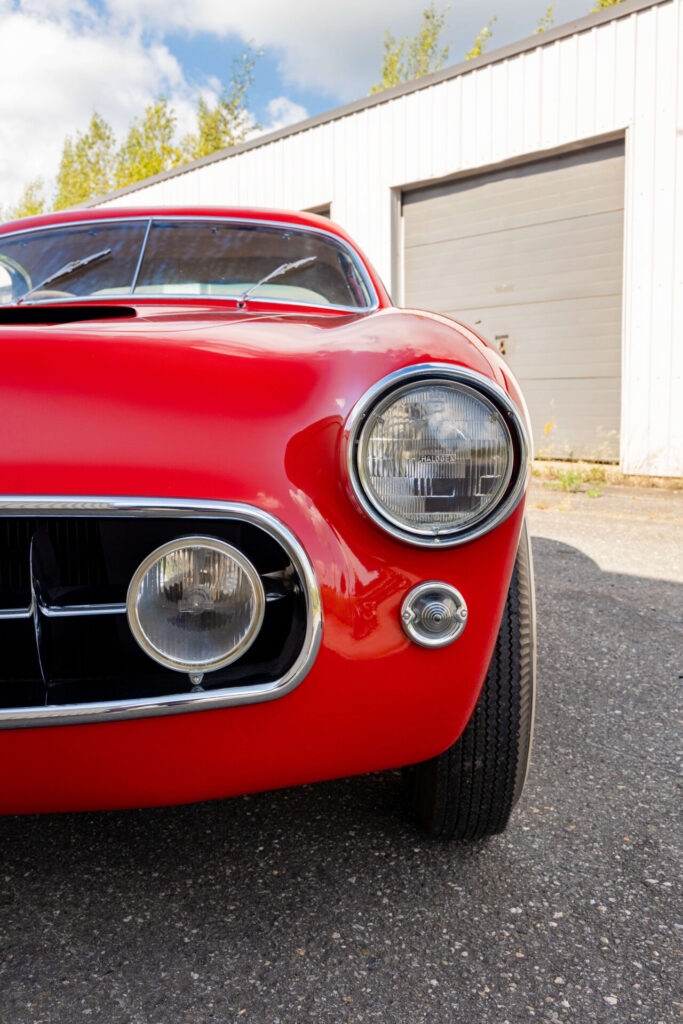
About the Model
Alfa Romeo is a brand with a long history that dates back to 1910. During the Second World War, bombings destroyed about 60% of their factories. Despite this, at the ceasefire, Alfa Romeo decided to rebuild and get back into making cars. At first, it produced trucks and reintroduced a model that was made before the war.
Based on the 2500 model made pre-war, Alfa Romeo produced the post-war 6C 2500. The fact that external coachbuilders made most of the bodies for this car made its production possible in small series while Alfa Romeo was getting back on its feet. Using the remaining 2500 chassis the war spared, Alfa Romeo improves the car’s transmission and suspension among other things. The new 2500 was also redesigned with a modern-looking fastback tail. The new post-war version of the 2500 was rebaptized “Freccia d’Oro” or “Golden Arrow.” From 1947 to 1953, about 1,450 6C 2500 were made with 414 produced in 1949. Although these are small numbers, the post-war Alfas sold well. As the postwar market was desperate for new cars, they sold as fast as they were made. By all measures, the model was a commercial success.
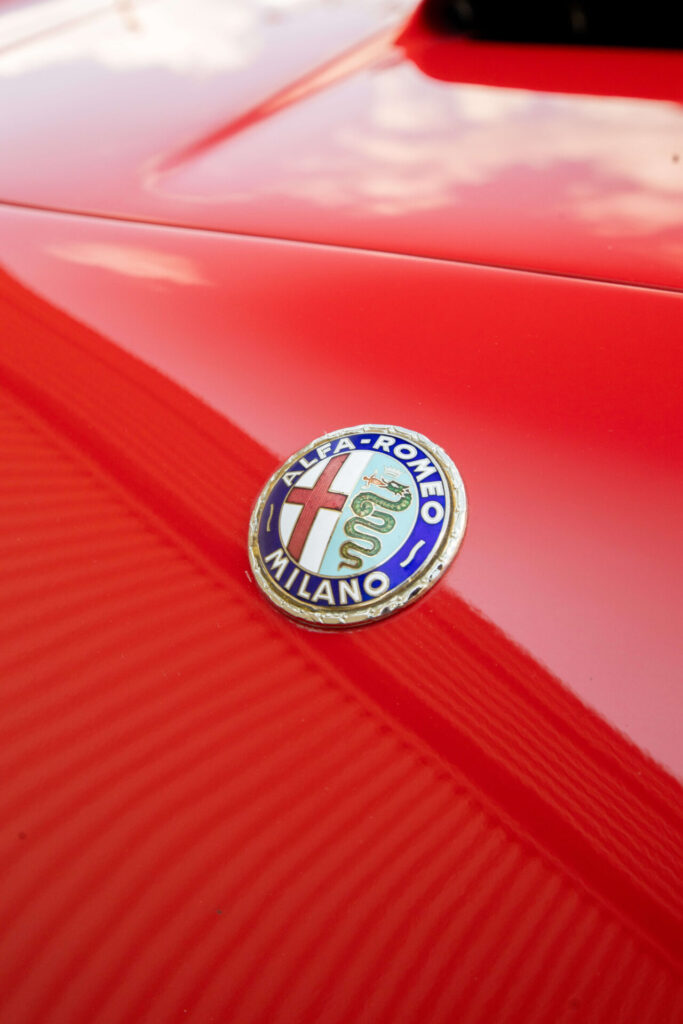
The Last of the Greats
Despite the disruptions the war caused, the spirit of automotive competition was alive and well in Italy. Because of this, Alfa Romeo made the 6C 2500 in two versions, the Sport (S) and the Super Sport (SS). The SS model, like the one in the Demers Car Collection, was 15 bhp more performant than the S model.
As soon as car production was underway, Alfa Romeo also developed a Competizione version of the 6C 2500. Three units were made. One, driven by famous race car racer Juan Manuel Fangio, placed third at the 1950 Mille Miglia race. Although there were only three Competizione models, many used production 6C 2500s to race in various events.
We remember the 2500 as the last of the coachbuilt Alfas. In 1948, it took about 1,080 hours to assemble a 6C 2500. A quick internet search shows that it takes less than 35 hours on average to make a small assembly car today. In 1950, Alfa Romeo (in line with the rest of the automotive world) adopted new production methods that marked the end of an era. Coachbuilding was a thing of the past. The next Alfa Romeo, the 1900, was a monocoque structure produced on an assembly line and its sales targeted the mass market.
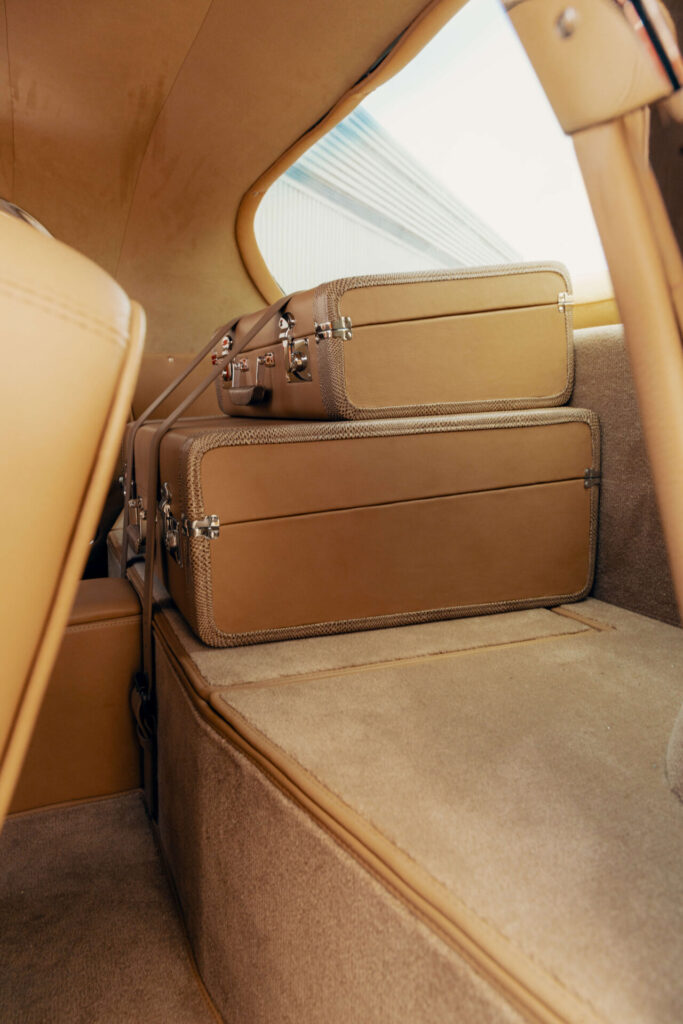
Body by Ghia
The 2500 was offered in a variety of body styles, the most basic of which were the S three-seat coupe and the Sports cabriolet. Due to the market’s enthusiasm for performance cars and Alfa Romeo’s success on the track, the SS models were the most popular. While Alfa Romeo provided bodies for some of its cars, Carrozzeria Touring made bodies for most SS coaches. Coachbuilders like Pininfarina and Ghia also made bodies for the 6C 2500.
The one in the Demers Car Collection was bodied by Ghia and is believed to be one of four Alfa Romeo 6C 2500 SSs done by the Italian coachbuilder. In the 1940s, Ghia had a reputation for making superb sporting bodies with aerodynamics in mind. The beautiful body you see here is made of aluminum, a light material that improves performance by decreasing the weight of the vehicle. While we recognize most Alfa Romeos of this period by their characteristic grille in three parts, the 6C 2500s done by Ghia were criticized for not respecting this design element.
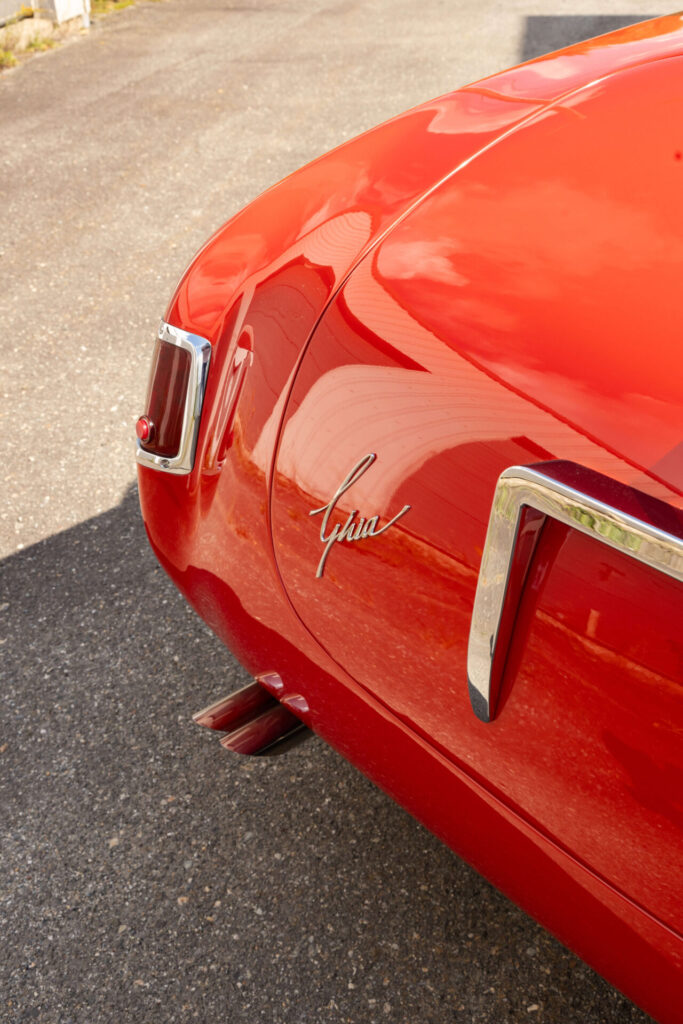
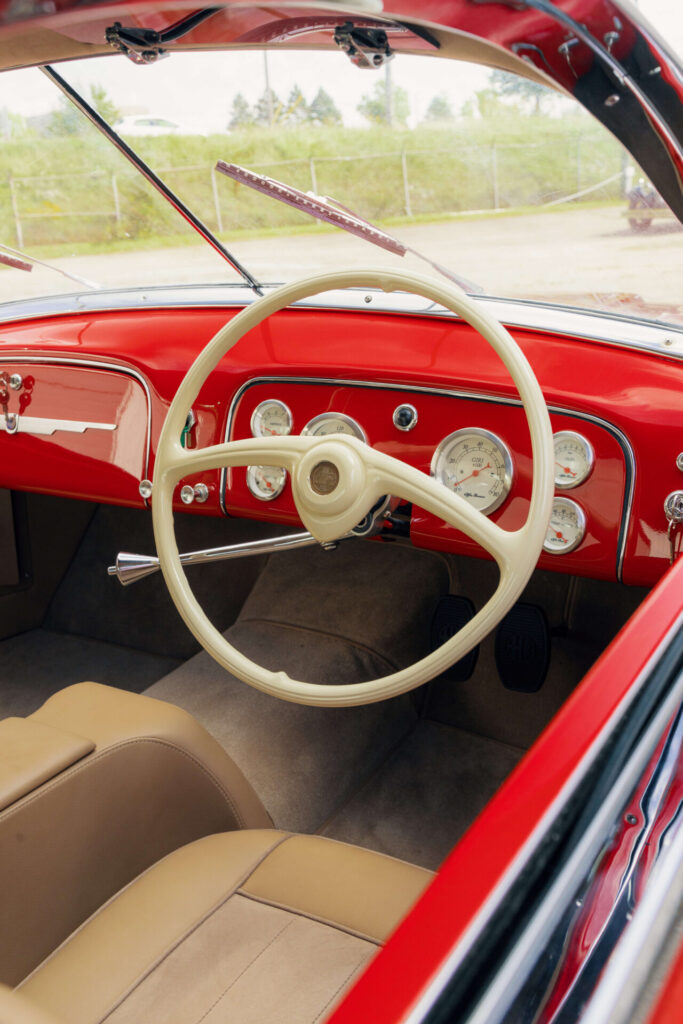
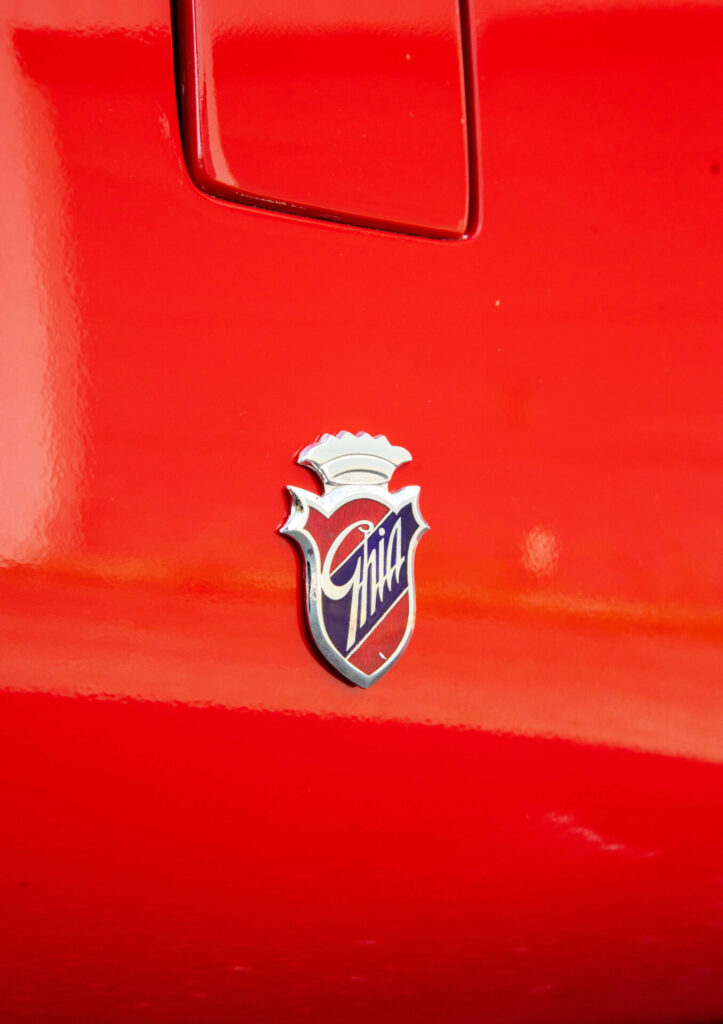
What Now
A beautifully unique model, the Alfa Romeo 6C 2500 in the Demers Car Collection deserves to be remembered. It is a model that saved the Italian brand after the destruction caused by the Second World War. Thus, it played a significant role in helping Alfa Romeo be what it is today. If you want to see it, you can now visit the Demers Car Collection. Contact us to inquire about pricing and tour availability. Don’t miss next week’s blog on the evolution of the gas pump.
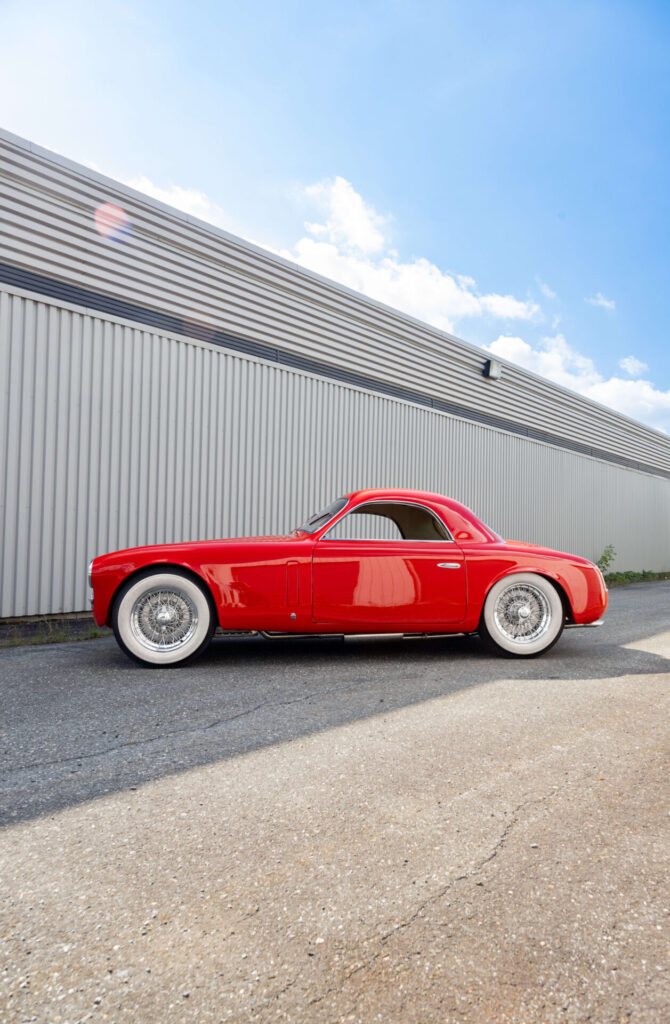
The Nitty Gritty
- Light-alloy detachable cylinder heads
- Double-overhead-camshafts
- Hemispherical combustion chambers
- 6 in-line engine
- Four-speed all-synchro transmission
- Independent suspension
- Four-wheel drum brakes
- 105 bhp
- 106 in wheelbase
- Max speed: 155 km/h or 96 mph
